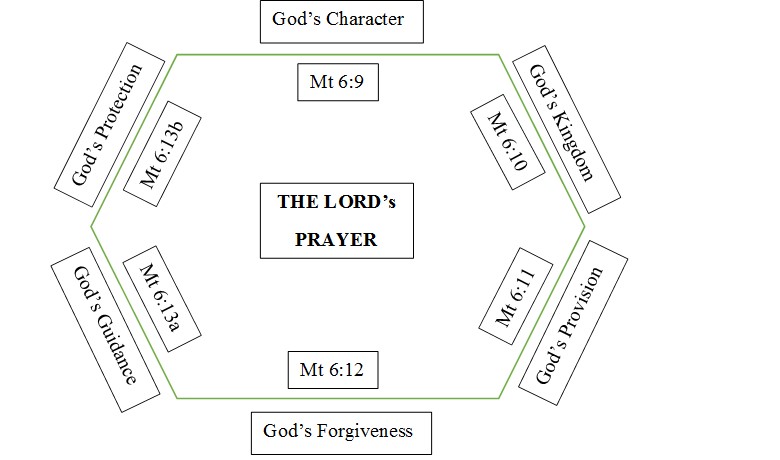In keeping with last week’s post about soul care being one of our challenges for 2017-18, I wanted to offer you a helpful tool I use to support my prayer life. I take this diagram from Mike Breen in Building a Discipling Culture, the Lord’s Prayer Hexagon:

Breen breaks the Lord’s Prayer into the 6 categories seen above. If this is the model for how Jesus’ disciples are to pray, then we can trust that utilizing these categories will give us great spiritual assurance, power, and insights. Here are three ways the hexagon might be used:
- The Categories Birth our Prayers: Use the categories, beginning with any of them and working through all the others, to guide prayer. As you meditate and reflect on the category, the Spirit will bring to mind all sorts of people, events, behaviors, and attitudes for which you should be praying.
- Our Prayer Filtered through the Categories: Take an issue that is particularly in your focus and pray for it through each category. For instance, say one wants to pray for their finances. Pray: Lord, you provide for your people daily. I can trust that you will provide for my financial distress. Lord, forgive me for focusing more on the issue at hand than your grace and your holiness. Forgive my lack of trust which has resulted in worry. Etc.
- A Category a Day: Since there are six categories, you could take one per day to cover Monday through Saturday. Meditate on that category throughout the day praying specifics each time you reflect. Then, on Sunday, pray with the corporate body. Rest and reflect on the week of prayer. [Of course, if your corporate gathering is on Tuesday night, then one would just shift the 6-day pattern]
If you are up for a fun, little read, then check out Luther’s thoughts on prayer written to his barber in the midst of tragedy.